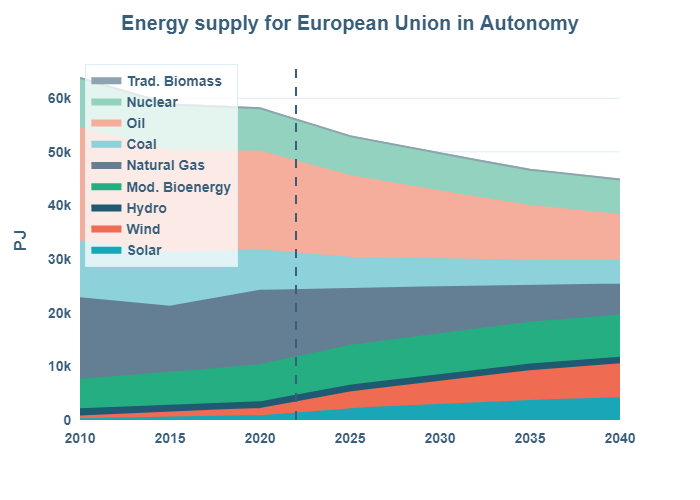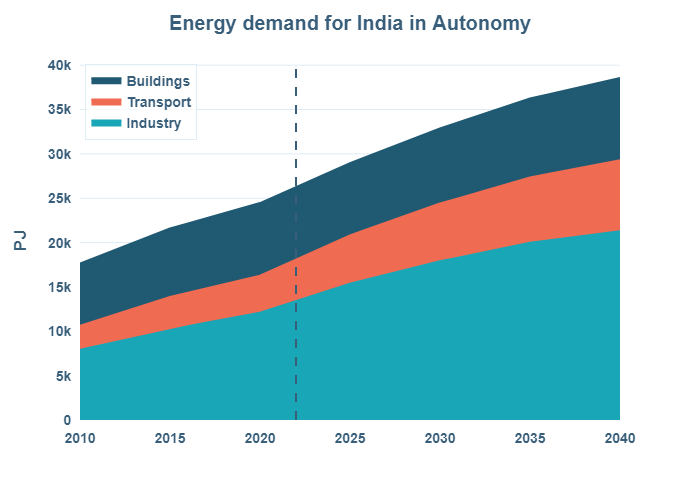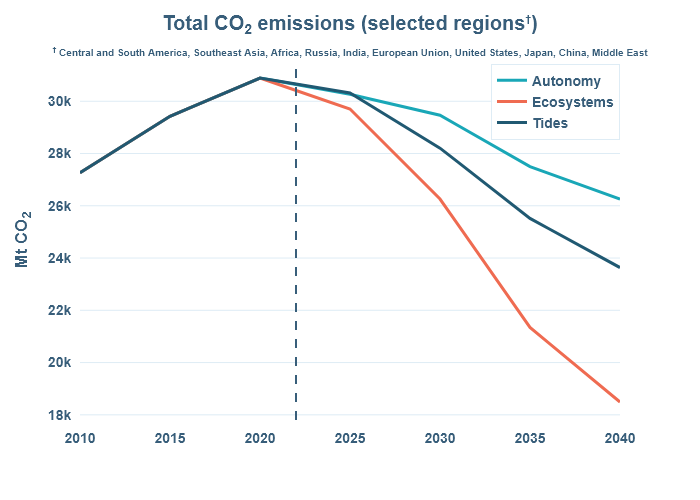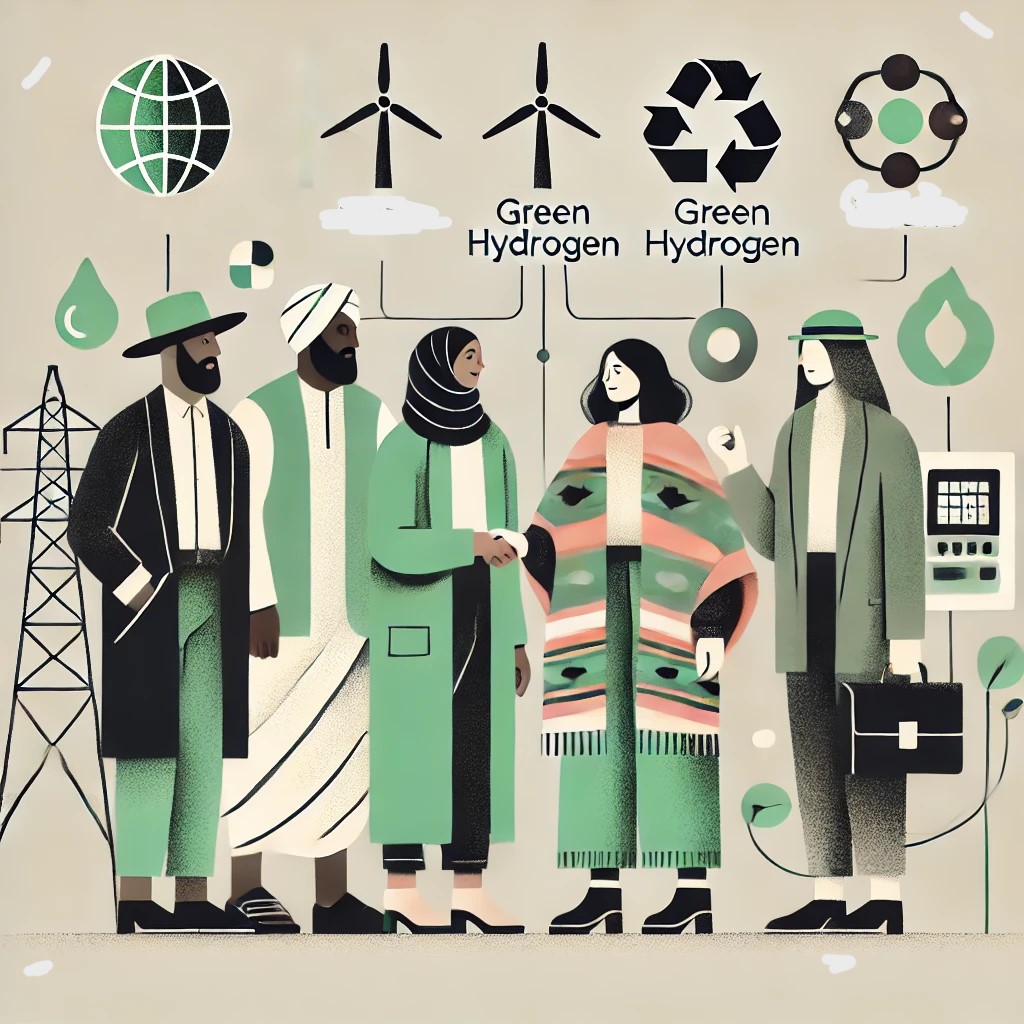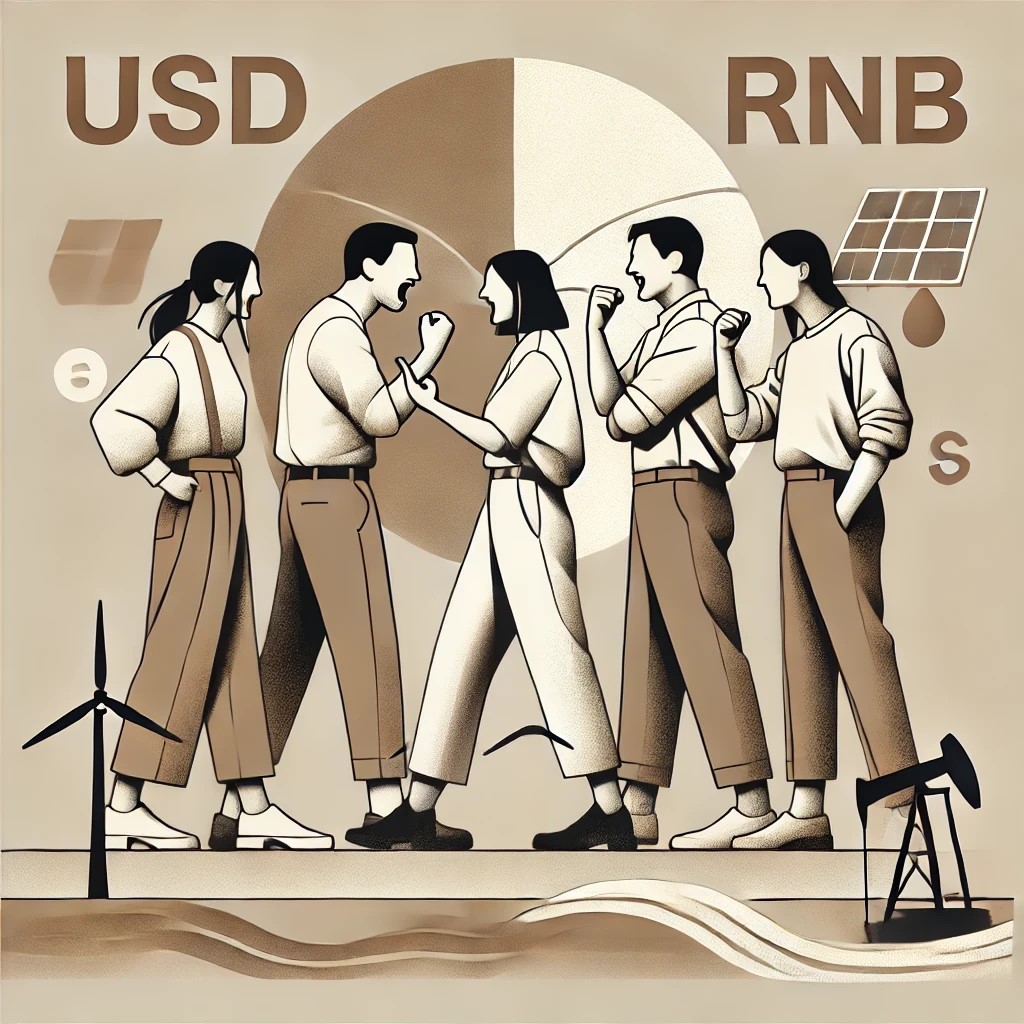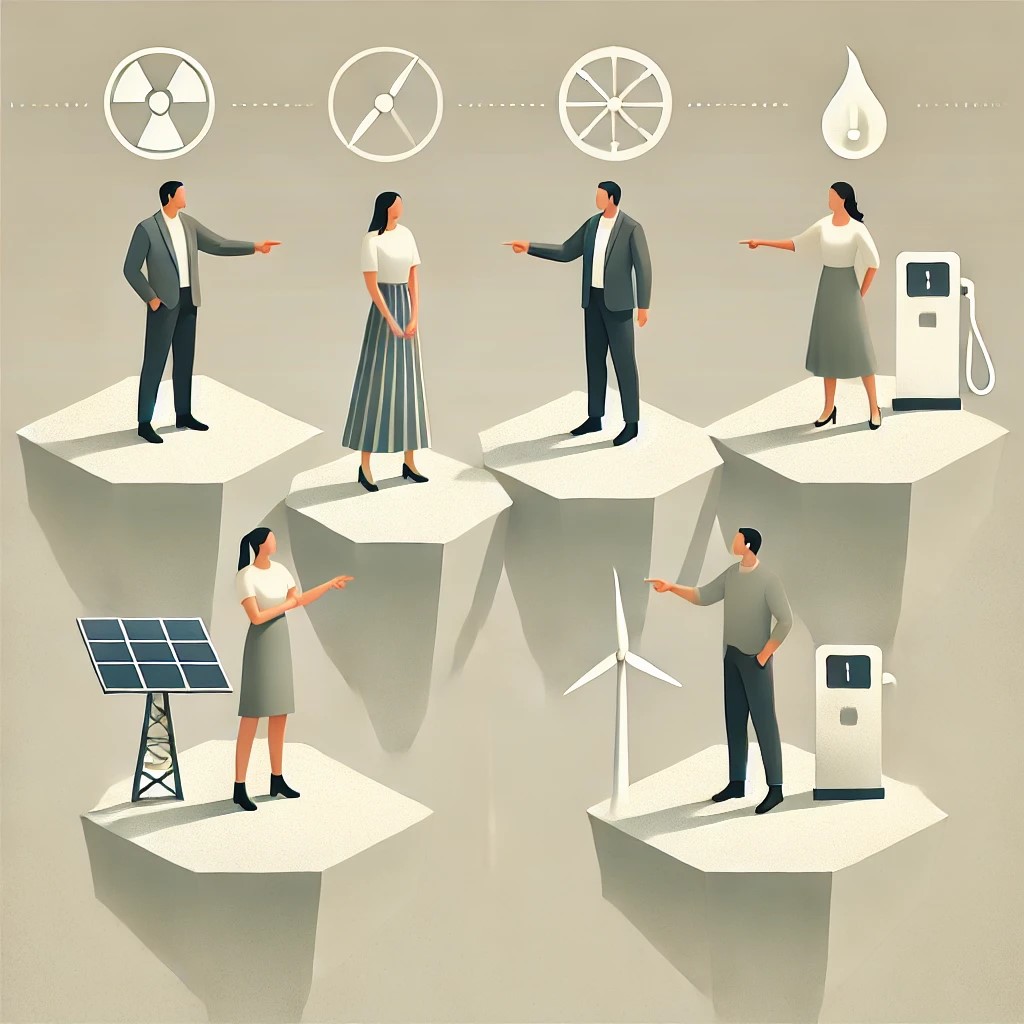
The Swayttata/ạstqlạl/Autonomy scenario: This is a world with significant geopolitical tension and where multiple alliances exist. The tensions make the energy security of supply an absolute priority, and, as many states do not have reliable suppliers, they seek autonomy with whatever they have to hand. In some cases this is local renewable sources, in other cases it is nuclear, and others still it is fossil fuels. On the demand side, stagnant economies mean energy demand grows less, and given the fear of geopolitical dependency, reducing…
The Swayttata/ạstqlạl/Autonomy scenario: This is a world with significant geopolitical tension and where multiple alliances exist. The tensions make the energy security of supply an absolute priority, and, as many states do not have reliable suppliers, they seek autonomy with whatever they have to hand. In some cases this is local renewable sources, in other cases it is nuclear, and others still it is fossil fuels. On the demand side, stagnant economies mean energy demand grows less, and given the fear of geopolitical dependency, reducing the demand for energy in some states becomes a matter of top necessity, not of choice.
The socio-political transition: Whilst not a state of war, cooperation between states in different alliances is limited. This hinders the globalisation of services and undermines global supply chains. States reinforce become increasingly authoritarian to push through their economic priorities, and try to close their borders to throttle migration, but the numbers fleeing are also increasing, so sudden big bursts of migratory flows sometimes are forced on richer nations, sometimes causing virulent social reactions.
The techno-economic transition: A very wide range of outcomes emerges. Those with few local resources must run quasi war-economies to handle scarcity, pushing the market economy aside, and forcing some home-shoring or friend-shoring. Indeed, there is a forced focus on the circular economy. Other regions that were traditionally less dependent on globalisation, or have their own energy, are freer to develop their own route forward. But overall trade, innovation and growth all slow down.
The physical transition: The lack of cooperation strains the efficiency of food production and forces greater encroachment of humans on the usage of natural space, e.g. with mining locally. For the world as a whole, as a result there is a great variety of outcomes when it comes to mitigating the impact of climate change.
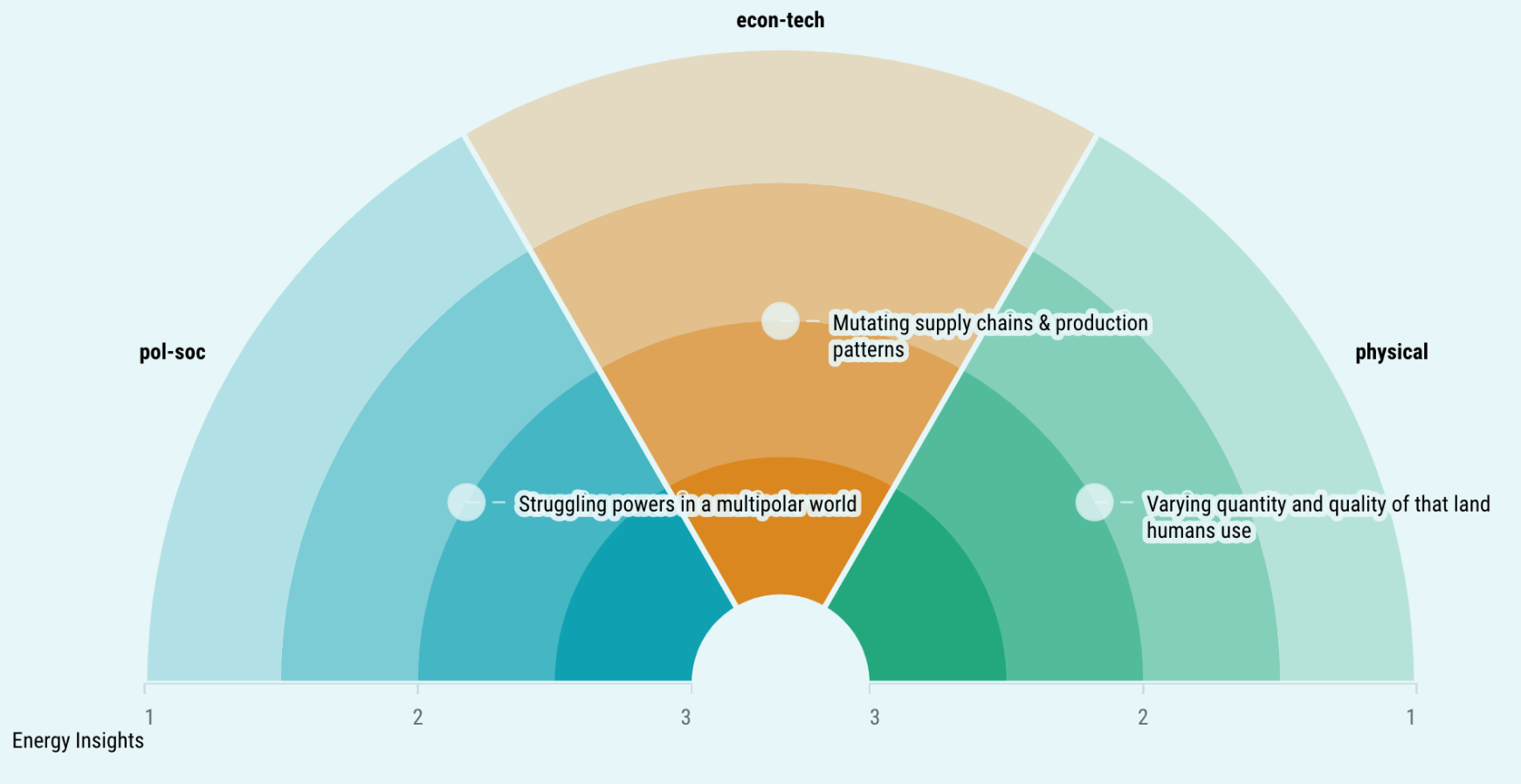


- Energy importers in Europe and East Asia find it hard to meet their energy needs, given their lack of local fossil fuels and raw materials needed for electrification. However, by actively promoting energy saving, reopening mines and forcing the pace of recycling/ renewable energy, they gradually shift to a better place, and indeed, decarbonise.
- Energy importers in Africa, Asia and Latin America face similar challenges, but lack the funds to make a rapid transition resulting in increased energy poverty.
- The heightened geoeconomic tension also slows overall growth in fossil fuel rich regions such as the Middle East, and North America. It is thus easier to invest in existing fossil fuel production than to switch to renewables, or invest in energy efficiency. Technology development and innovation are seen as being a matter of national security.
Involving a group based in multiple geographies, we have gathered a number of releavant information sources, be these reports, articles, or workshop outputs. Just a handful of articles are listed below. As the website has to be "finished" at a particular point in time, the articles may appear old. But do not fear, in the actual tool we are using, there are regular updates of new articles.

We have identified three distinct scenarios, each of which represent how the world may look in 2040.
